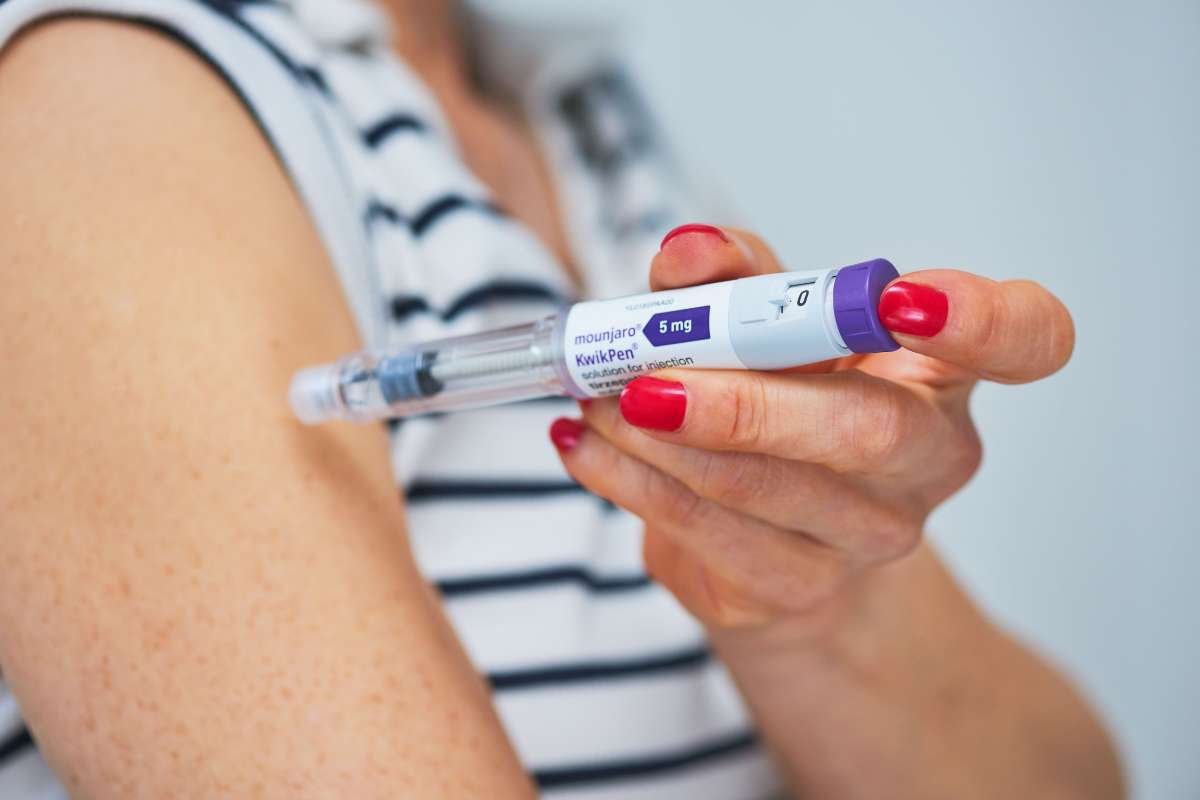Some tips for BIG gains without pain that you can incorporate into your routine along with the mentality of working out, eating, sleeping, and repeatin:
You leave every sweat session feeling like your body has no option but to develop, yet after a few weeks, your scale and strength stats appear to indicate otherwise. You may get discouraged at the prospect of not receiving the desired outcomes, but don’t worry: help is on the way! To get the most out of your exercises and time in the gym, you need a solid game plan.
Thus, who better to assist you to concentrate and steer you toward achievement than a panel of “gains-parts”? These fitness pros, like you, have put in a lot of effort and have also felt like quitting at times.
The difference is that they’ve fine-tuned their method to prevent halted development, enabling them to employ proper size-building techniques. To maximize your muscle development, it’s important to work out regularly, eat a healthy diet, and get enough sleep. Are you looking for tips for big gains without pain? Here are some ideas to help you achieve your fitness goals without overexerting yourself.
Here are 6 Exercise Tips for BIG Gains Without Pain;
1. Attend Evening Training Courses
Craig Capurso‘s tips for BIG Gains Without Pain include scheduling workouts at night, packing meals ahead of time, and devoting more fuel to the session for performance and recuperation.
C Craig gets a lot more effective exercise at night with his fuel reserves full than he would if he trained earlier in the day without enough energy. If you want to see results, eat a couple of meals before your exercise, and don’t scrimp on the post-workout carbs—even if you train late at night. Carbohydrates are an excellent method to fuel performance and promote recovery.
“By scheduling my exercises at night rather than in the morning or early afternoon, I can pack my meals ahead of time and devote more fuel to that session for performance and recuperation.” Craig Capurso’s

Many individuals find that the best time to work out is between 4 and 7 p.m. Any later and you risk interrupting your sleep cycle. Recall that getting enough sleep helps your muscles rebuild and provides higher anabolic results.
“Your muscles develop in your sleep and during repose, not at the gym,” says Calum von Moger, a bodybuilder. “Natural hormones are produced during sleep and will assist you in recovering and achieving the outcomes you have worked so hard to achieve.”
Von Moger also suggests drinking a casein protein smoothie before night, aiming for 20-40 grams of casein. Since your body uses protein even while sleeping, it’s necessary to maintain enough quantities of this essential nutrient. “As you sleep, this will supply a trickle of amino acids to feed your muscles,” he adds.
2 Maintain Your Hydration
Some individuals focus too much attention on eating while neglecting other necessities, such as sufficient water.
“Since your body is 70% water, water plays an important part in your daily function and peak performance,” von Moger adds. “Athletes must keep hydrated in order to operate at the intensity required to grow lean muscle.”
During the day, especially during fat-loss and muscle-building periods, drink and sip water. It’s common to mistake hunger for dehydration, so staying hydrated is very important while trying to lose weight.
Consuming enough of water is especially important during and after an exercise, since even mild dehydration may impair performance. Aim for at least 64 ounces (approximately two liters) of water every day.
If you have trouble remembering to drink water, carry a refillable, wide-mouth container, such as a Nalgene, or even a shaker bottle with you at all times.
You may also use your phone to create many daily reminders to remind you to take a water break.
3. Make A Potent Pre-Workout Mixture
Another tips for BIG Gains Without Pain, Just as the foods you consume before your exercise contribute significantly to your available fuel sources, the supplements you take may bring significant advantages as well. Branched-chain amino acids (BCAAs), which are important for muscular energy and repair; beta-alanine, which can help improve muscular endurance; creatine, which supports both size and strength; and a nitric-oxide-boosting ingredient like citrulline malate are some pre-workout ingredients to consider.

“I take one scoop of Beta BCAAs, five grams of creatine, and a pre-workout substance like C4 before I go to the gym,” Craig Capurso adds. Throughout the exercise, he drinks Alpha Amino and 25 grams of dextrose to keep his energy levels up.
“After my exercise, I make sure to have 50 grams of COR-Performance Whey and an additional 5 grams of creatine,” Craig says. These vitamins assist to establish the ideal anabolic environment for your muscles, kicking off repair as soon as your exercise is over.
4. Maintain a Healthy Diet
Some helpful tips for BIG Gains Without Pain. Along with consuming the right foods, taking supplements before and after exercising can bring significant advantages. Consider incorporating pre-workout ingredients like Branched-chain amino acids (BCAAs), beta-alanine, creatine, and citrulline malate, which can enhance muscular energy, endurance, size, and strength. Craig Capurso recommends taking one scoop of Beta BCAAs, five grams of creatine, and a pre-workout substance like C4 before hitting the gym. During his exercise, he drinks Alpha Amino and 25 grams of dextrose to maintain his energy levels. After completing his workout, Craig takes 50 grams of COR-Performance Whey and an extra 5 grams of creatine to help establish the perfect anabolic environment for his muscles and facilitate repair.
Muscles are built in the kitchen, not the gym, as the saying goes. Keep a watchful eye on the balance of your food. If your diet consists mostly of protein, it’s time to make a change. “The idea that protein is the sole key macronutrient for developing muscle and strength is completely outdated,” Karina Baymiller says. “Carbohydrates and lipids are also vital in muscle development and recovery.”
“As a general guideline, maintain your daily protein consumption at 1 gram per pound of body weight,” she suggests, “and then fill the remainder of your calories with carbs and fats.”
The idea that protein is the sole significant macronutrient for muscle and power development is completely outdated. Carbohydrates and lipids are also vital in muscle development and recovery.” Karina Baymiller’s
Remember that you want to prioritize high-quality carbs and lipids in your diet. Twinkies and Ho-Hos, contrary to what certain dirty bulkers may have you think, are not perfect for sustaining a developing physique. Complex carbohydrates such as brown rice and sweet potatoes are excellent alternatives, as are natural fat sources such as fatty salmon and nuts.
Yet, simple carbohydrates like white rice may help grow muscle, particularly if consumed at the right time. “High glycemic-index carbohydrates, such as white rice or fruit, are preferable to other alternatives [at this time], since they digest fast and supply your body with energy to help you lift the bar in the gym,” von Moger explains.
5. Use the Right Frequency to Impact Your Muscles
Muscles need a lot of stimuli to develop, and they need more stimuli to keep growing. Work out at least four times a week, with a focus on big muscle groups. “Anything less than that, you may lose some advantages,” adds von Moger, who believes in exercising as often as possible—in a recovered condition, of course.
The goal is to properly divide your exercises so that you have at least 36 hours between exercising the same muscle group again.” Calum von Moger’s
Von Moger suggests spreading out your body-part training to allow for appropriate recuperation between sessions. “The goal is to properly separate your exercises so that you have at least 36 hours between exercising the same muscle group again,” he explains.
To achieve optimum recovery and training frequency, you’d exercise two muscle groups every session, at least four times per week, according to von Moger’s technique. By following these tips for big gains without pain, you can achieve the muscle development you desire without risking injury or burnout.
6. Eat often
There’s no getting around the fact that you have to eat to grow. In the event of continuing development, overall calorie intake is significantly more crucial than precise macronutrient breakdowns. Certainly, eating when you don’t feel like it is unpleasant, but you don’t have to consume a mountain of food in one sitting.
What is the greatest approach to obtaining more calories? “Eat regularly,” advises von Moger. “If you’re used to eating three meals a day, five meals may seem like an inconvenience, but the benefits are well worth it. This [meal frequency] will help you remain anabolic and get the best outcomes.”

You may teach your stomach to adapt to the greater calorie intake required to gain muscle by fuelling your body more often. The precise frequency of your meals is totally up to you, although many ambitious muscle-builders have discovered that eating 5-7 meals per day helps them stomach all of the food they have to consume.
Eating every few hours may help improve muscle protein synthesis, which is your ticket to bigger muscles.
Additionally, try incorporating the Above tips for BIG gains Without Pain into your routine:







